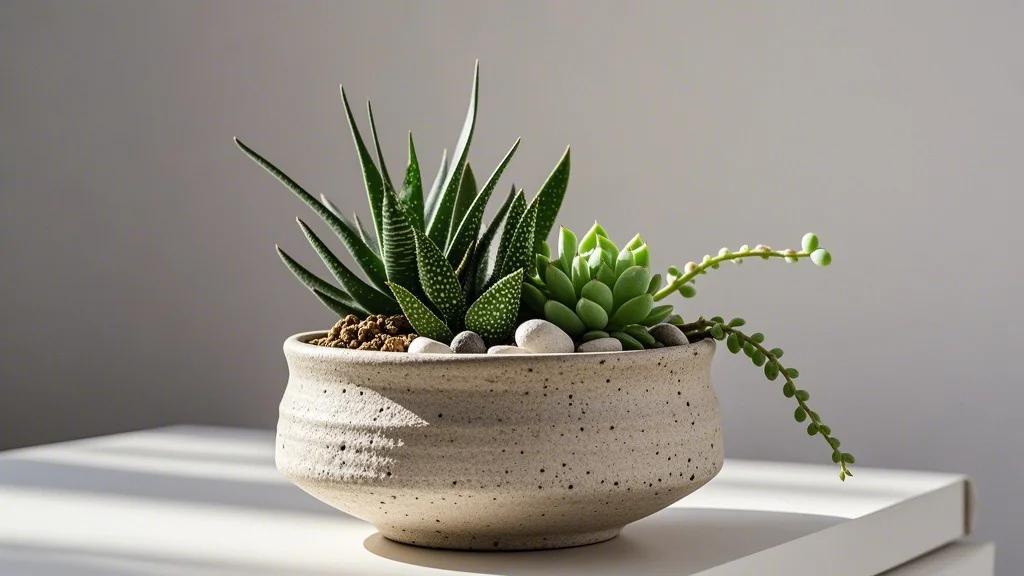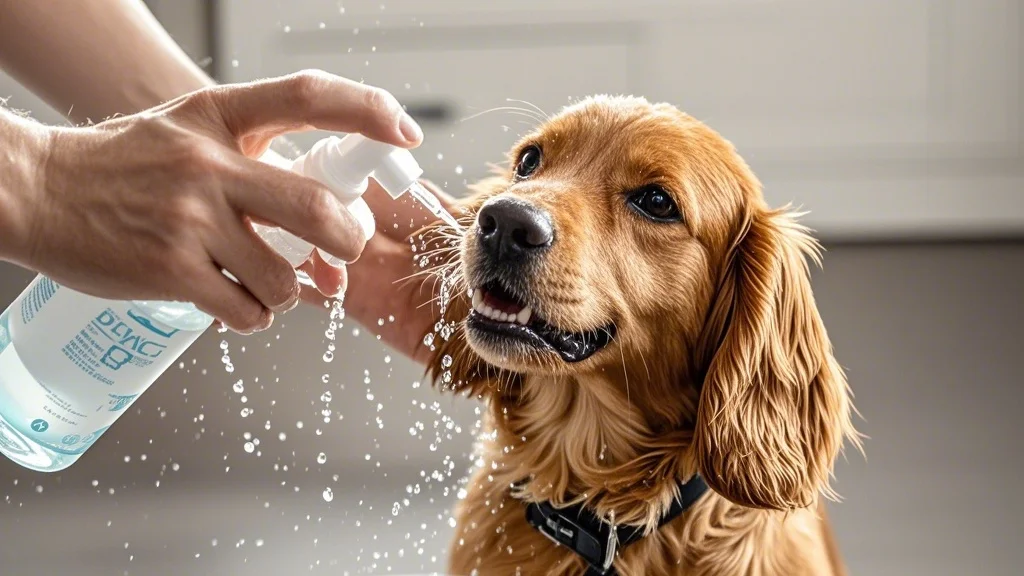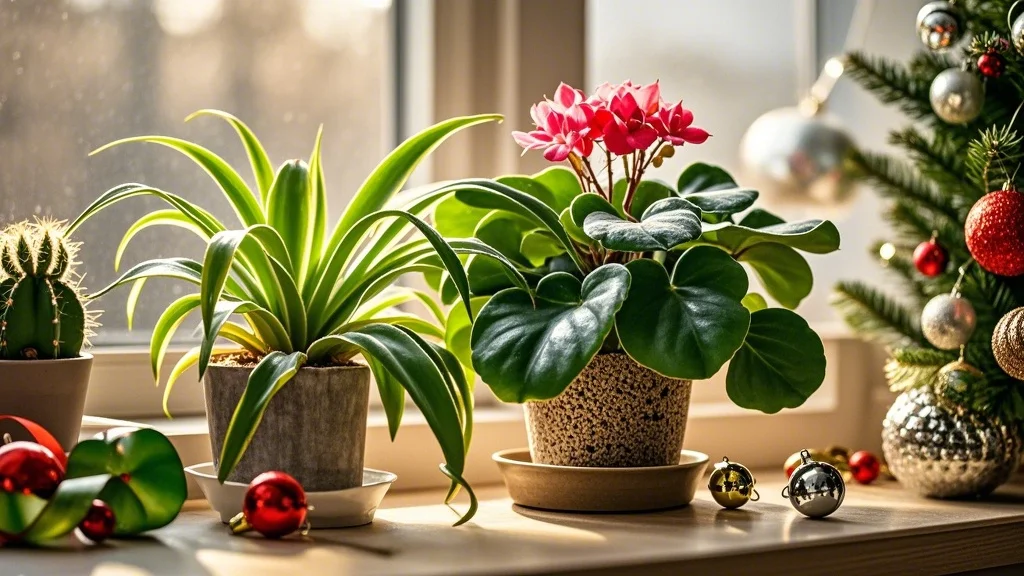As urban gardening enthusiasts, we understand the joy that houseplants bring to our living spaces. They purify the air, add natural beauty, and provide a connection to nature in our concrete surroundings. However, for pet owners, this green passion comes with an important responsibility: ensuring our beloved plants don’t pose a threat to our furry companions.
Many common houseplants contain compounds that are toxic to cats and dogs. When pets explore their environment through sniffing, pawing, and unfortunately, tasting, they can ingest these harmful substances. Recognizing the signs of plant toxicity quickly can make the difference between a minor incident and a serious health emergency.
This comprehensive guide will help you identify the warning signs of plant poisoning in pets, understand which symptoms require immediate veterinary attention, and learn preventative measures to create a pet-safe indoor garden.
Contents
- 1 Common Toxic Houseplants for Pets
- 2 Warning Signs of Plant Toxicity in Pets
- 3 Timeline of Symptoms
- 4 When to Call Your Veterinarian Immediately
- 5 First Aid Steps Before Reaching the Vet
- 6 Veterinary Diagnosis and Treatment
- 7 Prevention: Creating a Pet-Safe Indoor Garden
- 8 Special Considerations for Different Pets
- 9 Creating an Emergency Plan
- 10 Conclusion
- 11 Resources for Pet Owners
Common Toxic Houseplants for Pets
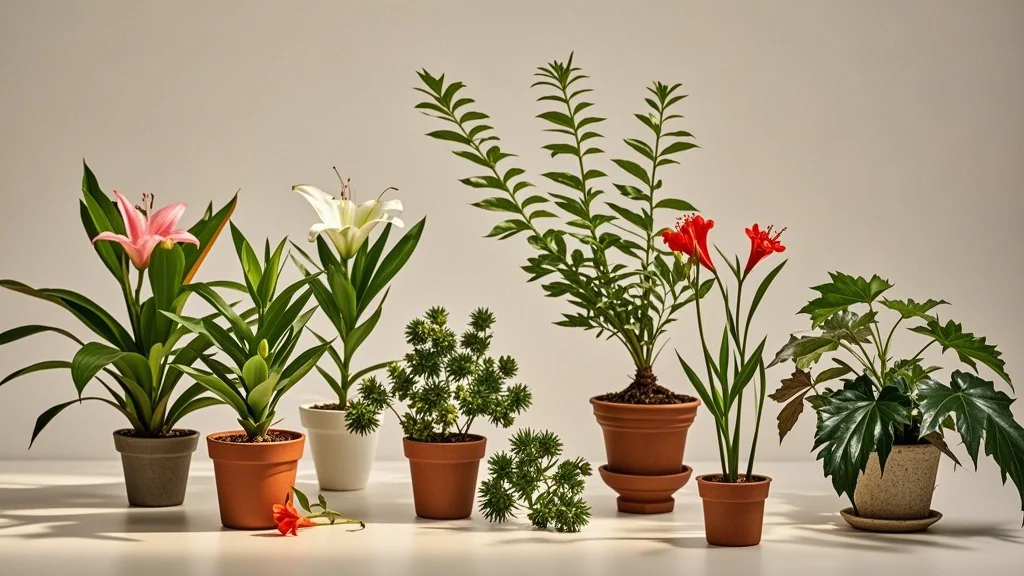
Before diving into symptoms, it’s helpful to know which plants pose the greatest risks to your pets:
Highly Toxic Plants
- Lilies (especially for cats): All parts are extremely toxic and can cause kidney failure
- Sago Palm: Contains cycasin, which can cause liver failure
- Oleander: Contains cardiac glycosides that affect the heart
- Castor Bean Plant: Contains ricin, a highly toxic protein
- Autumn Crocus: Contains colchicine, toxic to the bone marrow and intestinal tract
Moderately Toxic Plants
- Philodendron: Contains calcium oxalate crystals
- Pothos/Devil’s Ivy: Contains insoluble calcium oxalates
- Aloe Vera: Contains saponins and anthraquinones
- Peace Lily: Contains calcium oxalate crystals
- Jade Plant: Contains unknown toxins that can cause vomiting and lethargy
Mildly Toxic Plants
- Spider Plant: Can cause mild stomach upset
- Christmas Cactus: May cause mild gastrointestinal distress
- African Violet: Generally safe but can cause mild stomach upset if ingested in large quantities
Warning Signs of Plant Toxicity in Pets
Plant toxicity can manifest in various ways depending on the plant ingested, the amount consumed, and your pet’s size and overall health. Here are the key warning signs to watch for, organized by body system:
Gastrointestinal Signs
Digestive system symptoms are often the first indication of plant toxicity:
- Vomiting: May contain plant material or be bile-colored
- Diarrhea: Can range from mild to severe, sometimes with blood
- Drooling: Excessive salivation, often with pawing at the mouth
- Loss of appetite: Refusing food or treats
- Abdominal pain: Hunched posture, whining when touched, or a tense abdomen
- Difficulty swallowing: Particularly after ingesting plants with calcium oxalate crystals Case in point: When Samantha’s cat Milo chewed on her peace lily, he began drooling excessively within minutes. The calcium oxalate crystals in the plant caused immediate oral irritation—a warning sign that prompted her to call her veterinarian.
Neurological Signs
Some plant toxins affect the nervous system, causing:
- Disorientation: Appearing confused or unaware of surroundings
- Tremors or seizures: Uncontrolled shaking or convulsions
- Weakness: Difficulty standing or walking
- Lethargy: Unusual tiredness or depression
- Dilated pupils: Especially in cats
- Head pressing: Pushing the head against walls or furniture
- Ataxia: Uncoordinated movements or staggering
Cardiovascular and Respiratory Signs
Plants containing cardiac glycosides or other heart-affecting compounds can cause:
- Abnormal heart rate: Either too fast or too slow
- Difficulty breathing: Rapid, shallow breathing or respiratory distress
- Coughing: Especially after ingesting irritating plants
- Blue-tinged gums: Indicating poor oxygenation
- Collapse: Sudden weakness or fainting
Dermatological Signs
Some plant toxins cause skin reactions:
- Redness or irritation around the mouth, face, or paws
- Excessive scratching or licking of affected areas
- Swelling: Particularly of the face, lips, or tongue
- Hair loss in areas that contacted the plant
Urinary Signs
Certain plants, especially lilies in cats, can cause kidney damage:
- Increased urination or urinating outside the litter box
- Decreased urination (more serious, indicating potential kidney failure)
- Blood in urine
- Excessive thirst
Timeline of Symptoms
Understanding when symptoms typically appear can help you connect them to potential plant ingestion:
Immediate to 2 Hours Post-Ingestion
- Drooling
- Vomiting
- Oral irritation
- Pawing at the mouth
- Difficulty swallowing
2-6 Hours Post-Ingestion
- Continued gastrointestinal upset
- Lethargy
- Weakness
- Abdominal discomfort
6-24 Hours Post-Ingestion
- Neurological symptoms may begin
- Worsening gastrointestinal signs
- Signs of dehydration
- Changes in urination patterns
24+ Hours Post-Ingestion
- Organ-specific symptoms (kidney or liver failure)
- Severe neurological signs
- Cardiovascular abnormalities
When to Call Your Veterinarian Immediately
Some symptoms indicate a life-threatening emergency requiring immediate veterinary attention:
- Difficulty breathing or respiratory distress
- Seizures or tremors
- Collapse or inability to stand
- Profuse vomiting or diarrhea
- Significant lethargy or unresponsiveness
- Any symptoms after lily ingestion in cats
- Sudden onset of abnormal behavior
- Pale or blue-tinged gumsEmergency insight: Dr. Martinez, emergency veterinarian, notes: “With lily toxicity in cats, every minute counts. Even if your cat just licks a lily petal or pollen, call your vet immediately. By the time symptoms appear, kidney damage may already be severe.”
First Aid Steps Before Reaching the Vet
If you suspect your pet has ingested a toxic plant:
- Remove your pet from the plant’s vicinity to prevent further ingestion
- Identify the plant if possible (take photos or bring a sample)
- Do NOT induce vomiting unless specifically instructed by a veterinarian
- Gently rinse your pet’s mouth with water if there are visible plant parts
- Check for and remove any plant material stuck in teeth or gums
- Contact your veterinarian or pet poison helpline immediately
What NOT to Do
- Don’t wait for symptoms to worsen before seeking help
- Don’t administer home remedies without veterinary guidance
- Don’t force your pet to drink or eat if they’re showing signs of without professional advice (some toxins can cause more damage coming back up)
Veterinary Diagnosis and Treatment
When you arrive at the veterinary clinic, the following may occur:
Diagnostic Procedures
- Physical examination: Checking vital signs and overall condition
- Blood tests: To assess organ function and detect toxins
- Urinalysis: Especially important for suspected kidney damage
- Imaging: X-rays or ultrasound to check for gastrointestinal obstructions
- Electrocardiogram (ECG): For suspected cardiac toxicity
Treatment Approaches
Treatment varies based on the specific plant toxin and severity of symptoms:
- Decontamination: Inducing vomiting (if appropriate) or administering activated charcoal to bind toxins
- Intravenous fluids: To support kidney function and prevent dehydration
- Medication: To control symptoms like vomiting, seizures, or heart abnormalities
- Supportive care: Oxygen therapy, temperature regulation, and nutritional support
- Specific antidotes: For certain toxins (though these are rare for plant poisonings)
- Hospitalization: For monitoring and continued treatment in severe cases
Prevention: Creating a Pet-Safe Indoor Garden
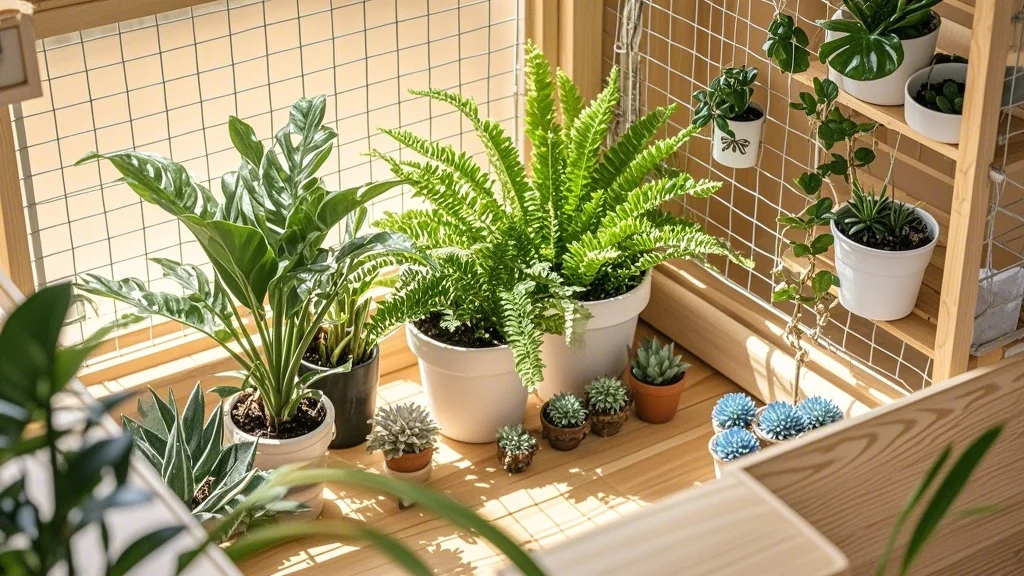
The best approach to plant toxicity is prevention. Here’s how to maintain your love for houseplants while keeping your pets safe:
Pet-Safe Plant Alternatives
Replace toxic plants with these pet-friendly options:
- Boston Fern: Adds lush greenery without toxicity
- Spider Plant: Safe despite causing mild upset if consumed in large amounts
- Areca Palm: Pet-safe and excellent air purifier
- Calathea: Beautiful patterned leaves and non-toxic
- Swedish Ivy: Trailing plant that’s safe for curious pets
- Blue Echeveria: Attractive succulent that won’t harm pets
- Haworthia: Aloe-like appearance without the toxicity
- Peperomia: Diverse family of compact, safe plants
- Money Tree: Believed to bring good fortune and safe for pets
- Staghorn Fern: Unique wall-mounted option that’s pet-friendly
Strategic Plant Placement
- Hang plants from the ceiling or place on high shelves
- Use plant stands to elevate toxic plants out of reach
- Create designated plant rooms that remain closed to pets
- Use terrariums for small toxic plants
- Consider window boxes for herbs and small plants
Behavioral Training
- Use deterrent sprays (pet-safe bitter apple or citrus) on plant pots
- Provide alternative greens for pets to chew (cat grass, catnip)
- Use positive reinforcement to teach pets to avoid plants
- Create distractions with pet toys near plant areas
Monitoring Systems
- Motion-activated deterrents that make noise when pets approach plants
- Pet cameras to observe behavior when you’re away
- Physical barriers like decorative fencing around floor plants
Special Considerations for Different Pets
Cats
Cats are particularly vulnerable to plant toxicity due to their:
- Climbing abilities that give them access to elevated plants
- Grooming habits that increase toxin ingestion if pollen gets on fur
- Specific sensitivity to certain toxins (especially lilies)
- Natural curiosity and tendency to chew on leaves Prevention tip: For cat owners, completely eliminating lilies from your home is strongly recommended. Even minimal contact with lily pollen can be fatal to cats.
Dogs
Dogs present different challenges:
- More likely to ingest larger quantities of plant material
- May dig in potting soil or knock over plants
- Often chew on woody stems or branches
- Can reach countertops and tables in some cases
Small Pets (Rabbits, Guinea Pigs, etc.)
- Often have regular access to the floor where plants may be placed
- May be more sensitive to certain toxins due to their small size
- Naturally inclined to chew on plant material
- May be less closely supervised than cats and dogs
Creating an Emergency Plan
Being prepared for a potential plant poisoning can save precious time in an emergency:
- Keep important numbers accessible:
- Your regular veterinarian
- Nearest emergency veterinary clinic
- ASPCA Animal Poison Control: (888) 426-4435
- Pet Poison Helpline: (855) 764-7661 (fee may apply)
- Maintain a plant inventory:
- List all plants in your home with photos
- Note which are toxic and their specific toxins
- Keep information about each plant’s location
- Prepare a pet first aid kit including:
- Fresh 3% hydrogen peroxide (only to be used if directed by a veterinarian)
- Rubber gloves
- Saline eye solution
- Clean towels
- Pet carrier for transport
- Know your route to the emergency veterinary clinic
Conclusion
Creating a harmonious environment where both plants and pets thrive is entirely possible with knowledge and preparation. By recognizing the signs of plant toxicity, responding quickly to potential poisonings, and taking preventative measures, you can enjoy the benefits of urban gardening while keeping your beloved pets safe.
Remember that symptoms of plant toxicity can range from mild to life-threatening, and quick action is essential when you suspect your pet has ingested a toxic plant. When in doubt, always consult with a veterinary professional.
At OwnGardens, we believe that urban gardening should bring joy and wellbeing to every member of your household—including those with four paws. By following the guidelines in this article, you can create a beautiful, thriving indoor garden that’s safe for all.
Resources for Pet Owners
- ASPCA Toxic and Non-Toxic Plants List: www.aspca.org/pet-care/animal-poison-control/toxic-and-non-toxic-plants
- Pet Poison Helpline Plant Toxicity Information: www.petpoisonhelpline.com/pet-owners/basics/top-10-plants-poisonous-to-pets/
- Veterinary Partner Plant Toxicity Database: veterinarypartner.vin.com/default.aspx?pid=19239&catId=102899
By staying informed and vigilant, you can enjoy the beauty of houseplants while keeping your furry family members safe and healthy.

